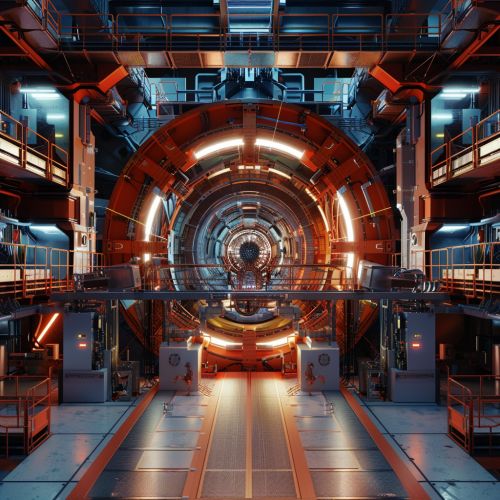Magnetic Monopole
Introduction
A magnetic monopole is a hypothetical elementary particle in particle physics that is an isolated magnet with only one magnetic pole (a north pole without a south pole or vice versa). In more technical terms, it would be a particle that is a source of a magnetic field, but unlike a dipole, which has both a north and a south pole, a monopole would have only one pole. The concept of magnetic monopoles has intrigued physicists for many decades due to its implications for Maxwell's equations, quantum field theory, and grand unified theories (GUTs).
Historical Background
The idea of magnetic monopoles dates back to the 19th century when James Clerk Maxwell formulated his equations of electromagnetism. Maxwell's equations describe how electric and magnetic fields propagate and interact with matter. However, these equations are symmetric with respect to electric and magnetic fields only if magnetic monopoles exist. In 1931, Paul Dirac showed that the existence of even a single magnetic monopole in the universe would explain the quantization of electric charge, a fundamental mystery in physics.
Theoretical Framework
Dirac Monopoles
Paul Dirac's theoretical framework for magnetic monopoles is one of the most significant contributions to the field. Dirac introduced the concept of a Dirac string, a hypothetical one-dimensional singularity that connects a monopole to an antimonopole. The presence of a Dirac string would not be observable if the magnetic charge is quantized, leading to the famous Dirac quantization condition, which relates the electric charge (e) and the magnetic charge (g) as follows:
\[ eg = \frac{n\hbar}{2} \]
where \( n \) is an integer, \( \hbar \) is the reduced Planck constant. This condition implies that the existence of a single magnetic monopole would necessitate the quantization of electric charge.
Grand Unified Theories
In the context of grand unified theories (GUTs), magnetic monopoles are predicted to arise naturally. GUTs aim to unify the three fundamental forces of the Standard Model: the electromagnetic, weak, and strong forces. These theories suggest that at high energy levels, these forces merge into a single force. During the cooling of the universe, symmetry breaking occurs, leading to the formation of monopoles. The most well-known GUT that predicts monopoles is the Georgi-Glashow model.
Experimental Searches
Despite extensive experimental searches, magnetic monopoles have not been observed. Various experiments have been conducted using different methods, including:
Particle Accelerators
Particle accelerators like the Large Hadron Collider (LHC) have been used to search for monopoles. These searches involve looking for ionization patterns that would be indicative of a monopole passing through a detector. However, no conclusive evidence has been found.
Astrophysical Observations
Astrophysical observations have also been employed to search for monopoles. For example, the Parker Bound sets a limit on the density of monopoles in the universe based on the survival of the galactic magnetic field. Additionally, searches for monopoles in cosmic rays have been conducted, but no monopoles have been detected.


Implications and Applications
The discovery of magnetic monopoles would have profound implications for physics. It would validate certain theoretical models and could lead to new technologies based on magnetic charge. Additionally, monopoles could provide insights into the early universe and the conditions that led to the formation of matter.
Quantum Field Theory
In quantum field theory, the existence of monopoles would necessitate modifications to the current understanding of gauge fields. Monopoles would introduce new topological structures and could lead to the discovery of new particles and interactions.
Cosmology
In cosmology, monopoles could provide evidence for the conditions of the early universe. The density and distribution of monopoles could offer clues about the symmetry-breaking events that occurred during the universe's formation.
See Also
- Maxwell's equations
- Quantum field theory
- Grand unified theories
- Dirac string
- Parker Bound
- Large Hadron Collider
